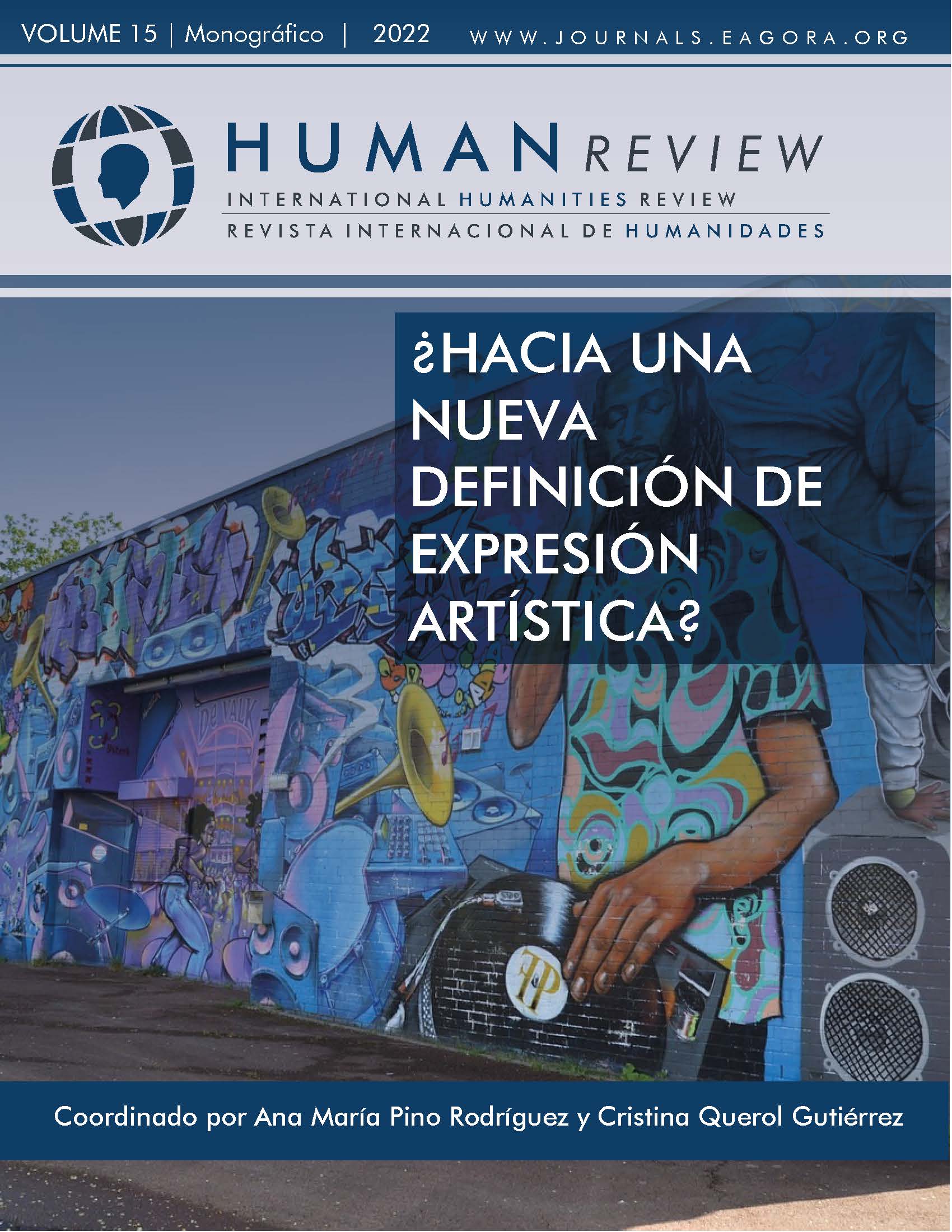Study of the animated feature film of The legend of La Llorona
DOI:
https://doi.org/10.37467/revhuman.v11.4350Keywords:
Cinematography, Latin American literature, Fiction literature, Legend, La LloronaAbstract
Since its beginnings, cinema has been strongly linked to literature through the adaptation of novels, the dissemination of literary heritage, the analysis of subjectivity, the theory of genres, the application of the categories of narratology to the study of filmic specifications, among many others. This study takes two literary stories and compares them through methodological and theoretical orientations of narratology with the animated version of The Legend of La Llorona, in order to determine similarities and differences. It also analyses certain elements of the cinematographic language that are consistent with the literary works in order to understand what makes them different and specific.
References
películas basadas en libros latinoamericanos | Señal Colombia. (n.d.). Retrieved February 8, 2022, from https://www.senalcolombia.tv/cine/peliculas-libros-latinoamericanos
Adame, H. (2010). Leyendas de todo México. https://doi.org/10.17151/kepes.2017.14.16.2
Aristizábal Santa, J., & Pinilla Rodríguez, Ó. (2017). Una propuesta de análisis cinematográfico integral. Kepes, 14(16), 11–32. https://doi.org/10.17151/kepes.2017.14.16.2
Barthes, R. (1970). Introducción al análisis estructural de los relatos. In Análisis estructural del relato.
Centro Gabo. (n.d.). 8 películas basadas en las historias de Gabriel García Márquez | Centro Gabo. Retrieved February 8, 2022, from https://centrogabo.org/gabo/hablemos-de-gabo/8-peliculas-basadas-en-las-historias-de-gabriel-garcia-marquez
Educación 3.0. (2018). Los mejores grandes clásicos de la Literatura llevados al cine. https://www.educaciontrespuntocero.com/recursos/grandes-clasicos-de-la-literatura-llevados-al-cine/
Fernández Riquelme, S. (2017). Si las piedras hablaran. Metodología cualitativa de Investigación en Ciencias Sociales. http://hdl.handle.net/10201/54506
Garcia Catalan, S., Sorolla-Romero, T., & Martín Núñez, M. (2019). Reivindicar el detalle: sutilezas y catálisis barthesianas en la ficción televisiva. Palabra Clave, 22(3), 1–29. https://doi.org/10.5294/pacla.2019.22.3.3
González Manrique, M. J. (2013). ). El “estigma de Eva” en la leyenda mexicana la llorona. Su representación cinematográfica. Antropología Experimental, 0(13).
González Pagés, A. (2006). Leyendas del Agua en México. Razón y Palabra, 11(53).
Horcasitas, F., & Butterworth, D. (2016). La Llorona. Tlalocan, 4(3), 204–224. https://doi.org/10.19130/iifl.tlalocan.1963.327
La Leyenda de la Llorona | Saga Las Leyendas Wiki | Fandom. (n.d.). Retrieved May 8, 2021, from https://legendquest.fandom.com/es/wiki/La_Leyenda_de_la_Llorona
Pomaquero-Yuquilema, M., Furió, D., & López, M. A. (2021). Análisis narratológico y comparativo de tres versiones animadas de la leyenda de la Llorona. Inclusiones, 8(Especial), 274–293. https://n9.cl/q1h32
Racionero, A. (2008). El lenguaje cinematográfico (1st ed.). Editorial UOC. www.editorialuoc.com
Rodríguez, R. (2020). Workshop Del papel a la pantalla. El ABC de la animación. In 2020.
Sadoul, G. (2019). Louis Lumière, metteur en scène. 1895, 87. https://doi.org/10.4000/1895.6789
Sánchez Hernández, T. (2014). De los Grimm a Disney. Un estudio narratológico de la adaptación de Blancanieves. Con A de Animación, 0(4). https://doi.org/10.4995/caa.2014.2166
Sánchez-Noriega, J.-L. (2001). Las adaptaciones literarias al cine: un debate permanente. Comunicar, 9(17). https://doi.org/10.3916/c17-2001-09
Sarapura Sarapura, M. (2016). Jane Austen y C. S. Lewis: de la literatura al cine. Análisis de transposición. Correspondencias & Análisis, 6, 289–322. https://doi.org/10.24265/CIAN.2016.N6.15
Seger, L. (1993). El arte de la adaptación. Cómo convertir hechos y ficciones en películas - Ediciones Rialp. https://www.rialp.com/libro/el-arte-de-la-adaptacion_133993/
Zavala, L. (2007). Del cine a la literatura y de la literatura al cine. Casa Del Tiempo, 95.
Downloads
Published
How to Cite
Issue
Section
License
Those authors who publish in this journal accept the following terms:
- Authors will keep the moral right of the work and they will transfer the commercial rights.
- After 1 year from publication, the work shall thereafter be open access online on our website, but will retain copyright.
- In the event that the authors wish to assign an Creative Commons (CC) license, they may request it by writing to publishing@eagora.org









